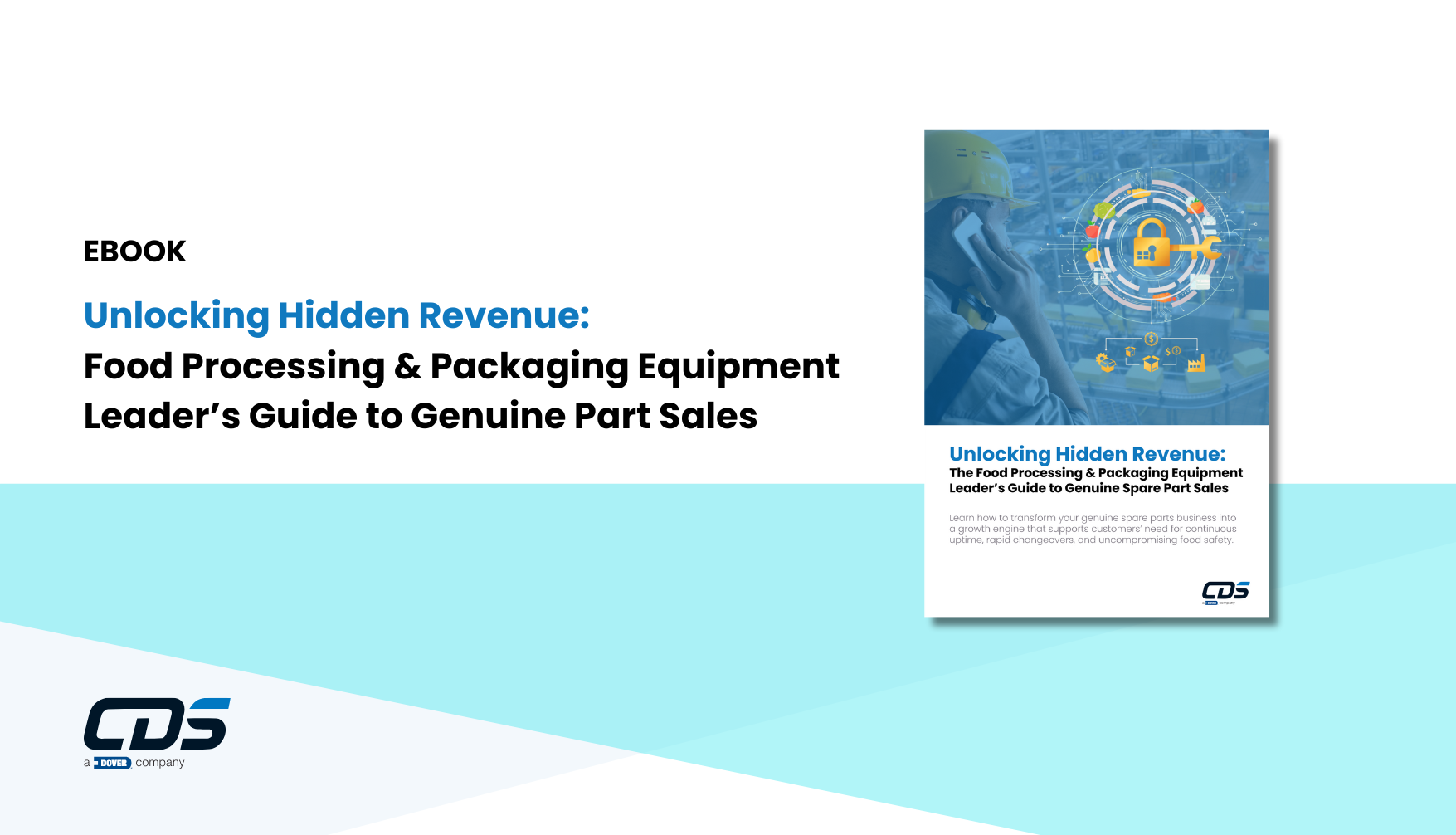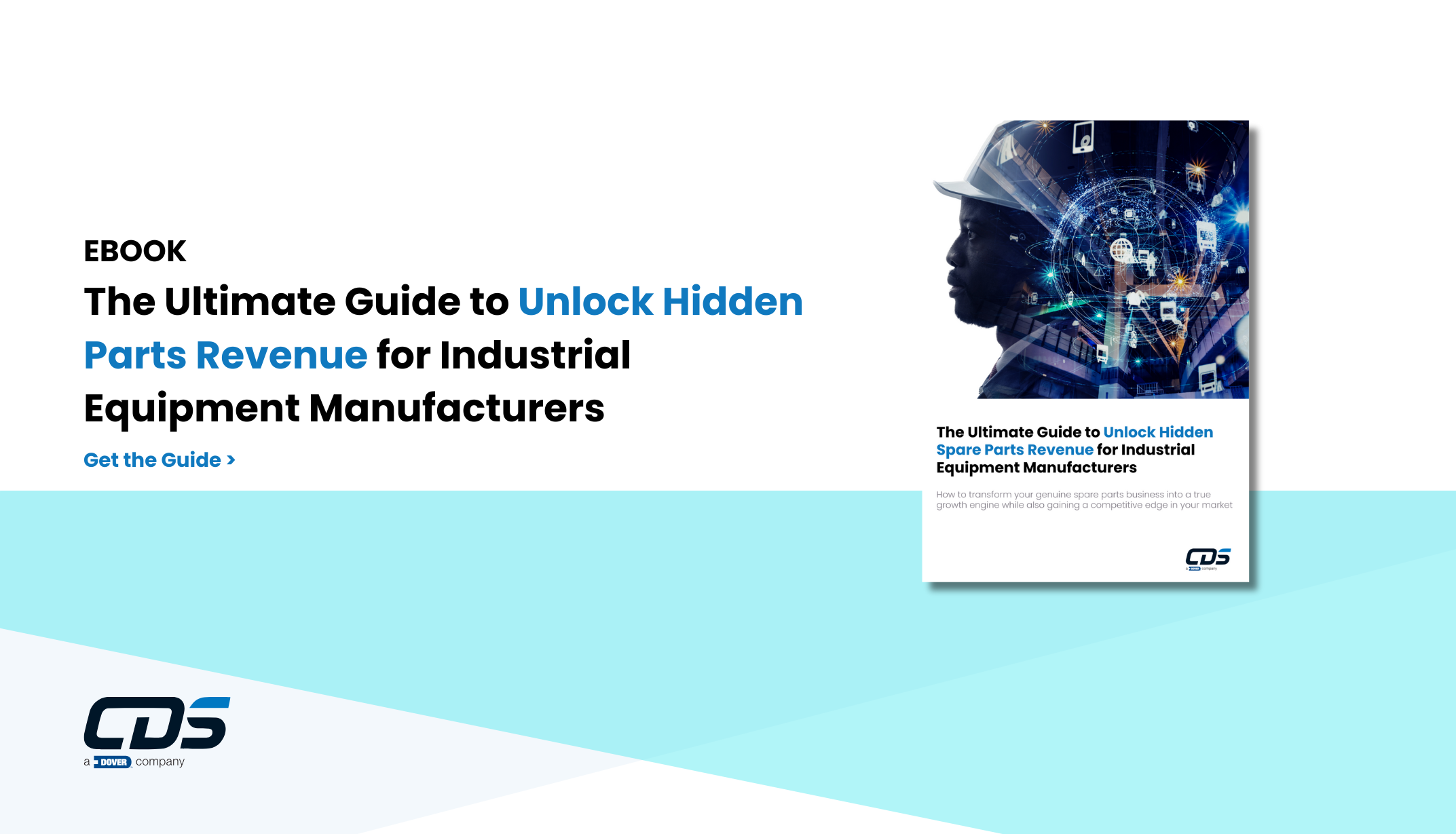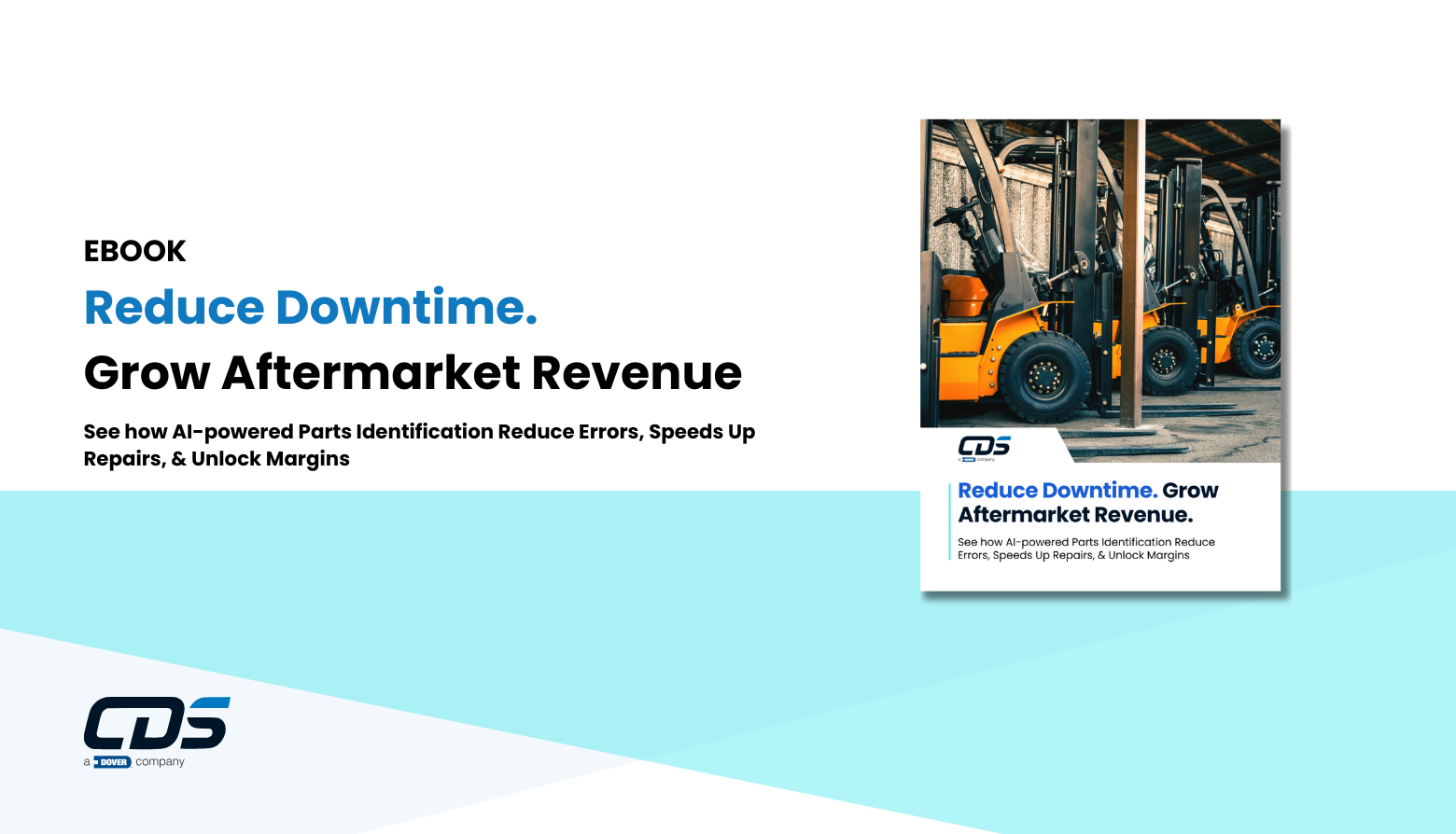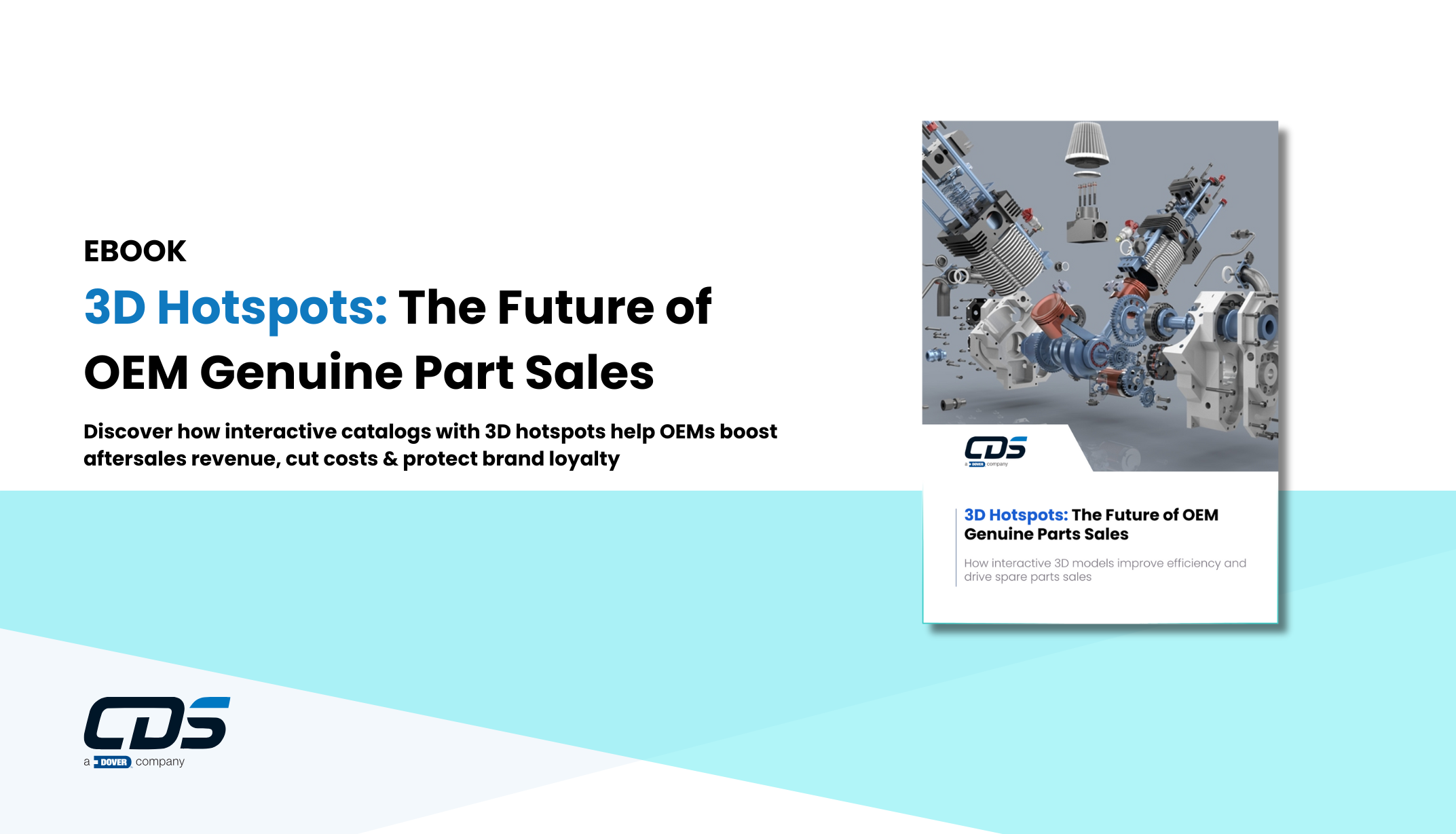Why Industrial Leaders are Investing in Digitizing Their After-Sales Operations
In the first part of this two-part series, we will examine the first five of ten considerations that after-sales leaders should consider when budgeting for 2026. Please join us next week for the second part to learn the last five considerations.
After-sales operations for leading industrial equipment manufacturers are a critical engine for growth, customer loyalty, and long-term profitability. With customers holding onto capital equipment for longer and economic pressures mounting, your after-sales business is poised to become your most valuable asset to drive sustainable revenue.
For leaders planning their 2026 budgets, the question should not be if to invest, but where to invest to unlock that revenue and build a genuinely future-proof business that drives continuous value for your customers across the product lifecycle. When your customers have equipment in service, unplanned downtime can be very costly.
As an industry equipment manufacturer, a brand promise is to ensure machine uptime and ongoing performance. When a machine breaks down, you need to ensure that customers and technicians have the necessary tools to assess the problem quickly, procure the right replacement parts, and make a speedy repair. Obtaining the correct replacement part can become a time-consuming, resource-heavy, and costly experience for everyone involved. For your end customers, their mission is to get their machine working as soon as possible. A process that is significantly delayed can lead to dissatisfaction, hurting your brand and driving them to an aftermarket competitor.
When it comes to part identification and procurement, customer mentality has shifted to an expectation for a seamless, B2C-like digital experience.
Based on industry trends and lessons from industry leaders and our customers who are already succeeding, we have compiled the top 10 considerations for after-sales leaders as they plan their 2026 budgets and projects.
The Top 10 Considerations for After-Sales Leaders Planning their 2026 Budget that Transforms Operations from Cost Center to Profit Center- Part 1
- Prioritize a Frictionless, Digital-First Customer Experience that Drives Loyalty and Revenue
B2B buyers are accustomed to the effortless convenience of B2C experiences, and a cumbersome, manual parts procurement process can be a deal-breaker. Driven by routine repairs of aging machines and customers keeping capital equipment in service longer, Market Research Intellect predicts that the spare parts market will nearly double by 2030. The changing behaviors of customers underscore the importance of a smooth, digital experience that reduces effort and builds customer confidence in your brand.
For 2026, consider investing in technologies that provide your customers and partners with a self-service experience that removes friction in your spare part sales processes. Industry leaders are moving beyond static PDFs and text-based catalogs to 2D and 3D interactive, visual platforms that allow users to easily find and purchase the correct parts in a B2C-like experience. It’s about providing an experience so simple that it turns a frustrated customer into a loyal advocate by ensuring their success with frictionless parts procurement.
- Invest in a Single Source of Truth for Your Spare Parts Management
Outdated manual processes, siloed data across legacy systems, and a lack of a single, unified bill of materials (BOMs) are silent killers of efficiency. They lead to challenging and inaccurate parts identification, incorrect orders, costly returns, and wasted labor hours for both your customers and your support teams. All of these challenges and the manual processes that accompany them slow down your parts sales process, consequently extending the unplanned downtime of your customers’ equipment.
If your 2026 agenda includes simplifying part sales processes or investing in e-commerce and customer/partner portals, ensure that the right platform serves as a single source of truth with a digital thread through all of your BOMs to ensure all technical information about the equipment and parts is accurate. Investing in a solution that centralizes your spare parts management not only streamlines your internal operations but also ensures that every user, from a field technician to a call center agent, is working with accurate, up-to-date information, thereby minimizing costly errors.
- Leverage Artificial Intelligence (AI) for Visual Identification
The “parts detective” problem is a massive source of friction for most industrial manufacturers with a genuine parts business. When a customer, support rep, or technician lacks a part number or serial number, they are forced to spend valuable time guessing or waiting for support to identify the part accurately. As time ticks away, the frustration can lead your end user to seek out non-genuine parts from aftermarket competitors if they are easier, cheaper, and faster to procure.
A critical investment for 2026 that simplifies the lengthy (and costly) parts identification processes is an AI-powered visual parts identification solution. AI-powered visual search eliminates ambiguity and guessing games pertaining to parts identification by giving users 2D/3D exploded views with automated hotspots to identify key parts and assemblies within the equipment. By utilizing your own CAD assets and an AI engine trained to your specific requirements, you will ensure that anyone can quickly and accurately identify the right part they need, ensuring faster procurement, decreased downtime, and fewer returns. Implementing visual search solutions with AI into your part sales process solves a huge pain point and positions you as an industry leader in innovation and customer service.
- Automate the Conversion of Existing CAD Assets
Many industrial manufacturers are sitting on a goldmine of engineering data with their CAD files. However, valuable CAD data is often locked away in design systems and inaccessible to after-sales teams or customers. Manually converting these assets into sales-ready visuals is a time-consuming and expensive process. Automating this process eliminates the need for CAD knowledge to leverage the assets into engineering accurate 3D visual representations of products and parts.
For 2026, a key budget consideration is a solution that automatically ingests and transforms existing CAD assets into a lightweight, web-ready format, regardless of size or file type. CAD assets allow you to create interactive 3D exploded views and accurate digital twins of your products, democratizing access to critical product knowledge without requiring a significant investment of engineering resources. By integrating with your CAD system, you can automatically exchange data back and forth to ensure that your end users and engineers are working from a single source of truth. Leveraging existing CAD assets will help you deliver a digital experience that drives high engagement and conversion while ensuring everyone is operating off accurate machine and part information.
- Integrate and Connect Your Business-Critical Systems
We’ve discussed the importance of eliminating data silos and creating a digital thread through your systems, but that is only possible through a robust integration strategy that works as an extension to your current systems. Modern software solutions should feature a combination of robust API-first architecture and pre-built essential connectors to create a bidirectional flow of data between your parts solution, ERP, ecommerce, and other core systems.
Whether your current genuine parts business model employs users from field service technicians, customer support, or partner reps, online customer portals, webshops, or a mix, any software solution should integrate with your current systems. While automating the spare part buying experience, keeping data flowing between systems is essential to ensure there are no silos and that your product data is accurate and up-to-date. Your 2026 investments should focus on solutions that enable a unified sales experience through a connected ecosystem that provides a unified and high-performance user experience across all user engagement channels without disrupting your current systems (IT will thank you).
Industrial Leaders are Investing in a Simplified Parts Procurement Process
As we prepare for the 2026 budgeting cycle, after-sales leaders must focus on transforming their operations to automate manual processes and create a simplified parts procurement process that drives top and bottom-line growth. The five considerations above are foundational steps toward enhancing customer loyalty and operational efficiency within your after-sales business.
By reviewing these considerations and embracing digitization strategies, industrial manufacturers can not only meet evolving customer expectations but also significantly reduce unplanned downtime for their customers while driving sustainable, profitable revenue growth for their parts and services business.
Stay tuned for part two of our series next week, where we will explore the remaining top considerations that can further elevate your after-sales operations and secure your brand’s competitive edge in the years to come. Don’t miss out on insights that could shape the future of your business!
Ready to move from strategy to action? Don’t just plan for 2026; get ahead of the game by getting a complimentary ROI assessment to determine if the CDS platform is a good fit to support your after-sales digitization efforts. Contact us today!

Back to Blog



















